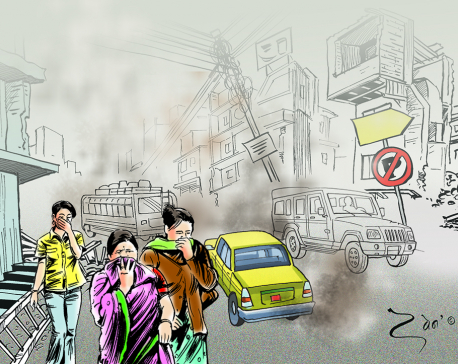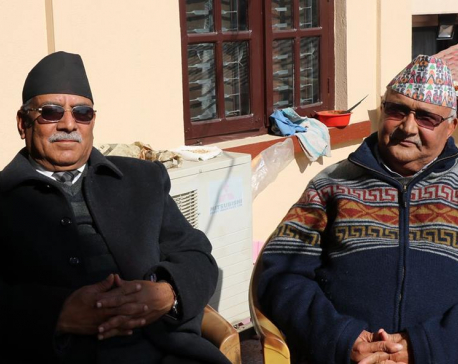
OR
Fire in Sunsari
Often our disaster response initiatives end in repetition of the same usual pattern. Words of condolence or sympathy to the victims, announcement of relief aids in some thousands, promise to make disaster response mechanisms more effective so on and so forth. Few months later, when the victims come to terms with the loss, the whole tragedy is forgotten by the agencies responsible to support their wellbeing. When the disaster strikes again, the same process gets renewed. This piecemeal approach to treat the victims of disasters—such as fire outbreaks, floods, and landslides—must not be the rule anymore. It must not be so for the victims of fire that destroyed more than 70 homes and properties in Sunsari district on Saturday evening.
The fire destroyed around 70 huts belonging to 46 families, mostly poor, in Itahari. Eighteen cattle and property worth around Rs 10.3 million were also gutted. Fire engines from Inaruwa, Itahari, Dharan, Biratnagar and Duhabi had been brought to tackle the inferno,but they came too late. The whole settlement had been reduced to cinders when the fire engines arrived at 9:30 PM, an hour after the fire had started spreading. The District Disaster Relief Committee provided Rs 5,000 per victim family as immediate relief. Likewise, social organizations like Nepal Red Cross Society provided tents, instant noodles, beaten rice, utensils and drinking water to the victims. No casualty has been reported in Sunsari, but many lives are being lost to these largely preventable disasters every year. In May, 2016, for example, a person lost his life while trying to contain forest fire in Pyuthan district. In April the same year, forest fire killed two persons in Gulmi. And four members of the same family succumbed to fire in Morang district in September, 2017.
These are extremely sensitive months for fire outbreak in Nepal’s plains. A slight blow of gale in the thatched huts can spark fire which, with the blowing gale, spreads to the whole village. Such incidents and deaths and destructions resulting from this can be prevented. Almost all of Nepal’s villages are now connected to road links. Thus transporting firefighters to these locations should not be a problem, especially in the Tarai plains. Besides, with widespread use of mobile phones incident of fire can be immediately reported to the nearest police or the firefighting stations. With local governments in place, it should not be difficult to procure fire fighting machines either. Sadly, elected leaders at the local levels seem more interested in buying luxury vehicles. We have not heard of them doing much to equip their offices with life saving vehicles such as ambulances and fire fighting tools. This is not how local governments should deliver service. In Sunsari, for example, fire fighters had to be brought from elsewhere. If the Municipality there had its own fire fighting machines, houses could have been saved and the properties could have been recovered with ease. More commitment from the local agencies is required to ensure that such incidents won’t be repeated again.
You May Like This

Mr Mayor, do something
Bidya Sundar Shakya is wasting precious time. If you have occupied highly important position but do not feel obliged to... Read More...

Oli, Dahal meet for 'something special'
BHAKTAPUR. Feb 18: After being elected as the Parliamentary Party leader, CPN (Maoist Center) Chiarman Puspa Kamal Dahal said, “Today... Read More...

There's something
There’s something That’s going on between Making it interesting Full of love life that’s everlasting ... Read More...





Just In
- MoHP cautions docs working in govt hospitals not to work in private ones
- Over 400,000 tourists visited Mustang by road last year
- 19 hydropower projects to be showcased at investment summit
- Global oil and gold prices surge as Israel retaliates against Iran
- Sajha Yatayat cancels CEO appointment process for lack of candidates
- Govt padlocks Nepal Scouts’ property illegally occupied by NC lawmaker Deepak Khadka
- FWEAN meets with President Paudel to solicit support for women entrepreneurship
- Koshi provincial assembly passes resolution motion calling for special session by majority votes






_20220508065243.jpg)






Leave A Comment